Course · Part 4 · Assignment 13
Read
The Structure of Colour Palettes
KeyThree
The key points from this assignment.
- Colour palettes typically use one of a number of common structures
- These include analogous, complementary, split–complementary, monochromatic, triadic, tetradic, and square
- Take these as your starting point when thinking about colours for a project
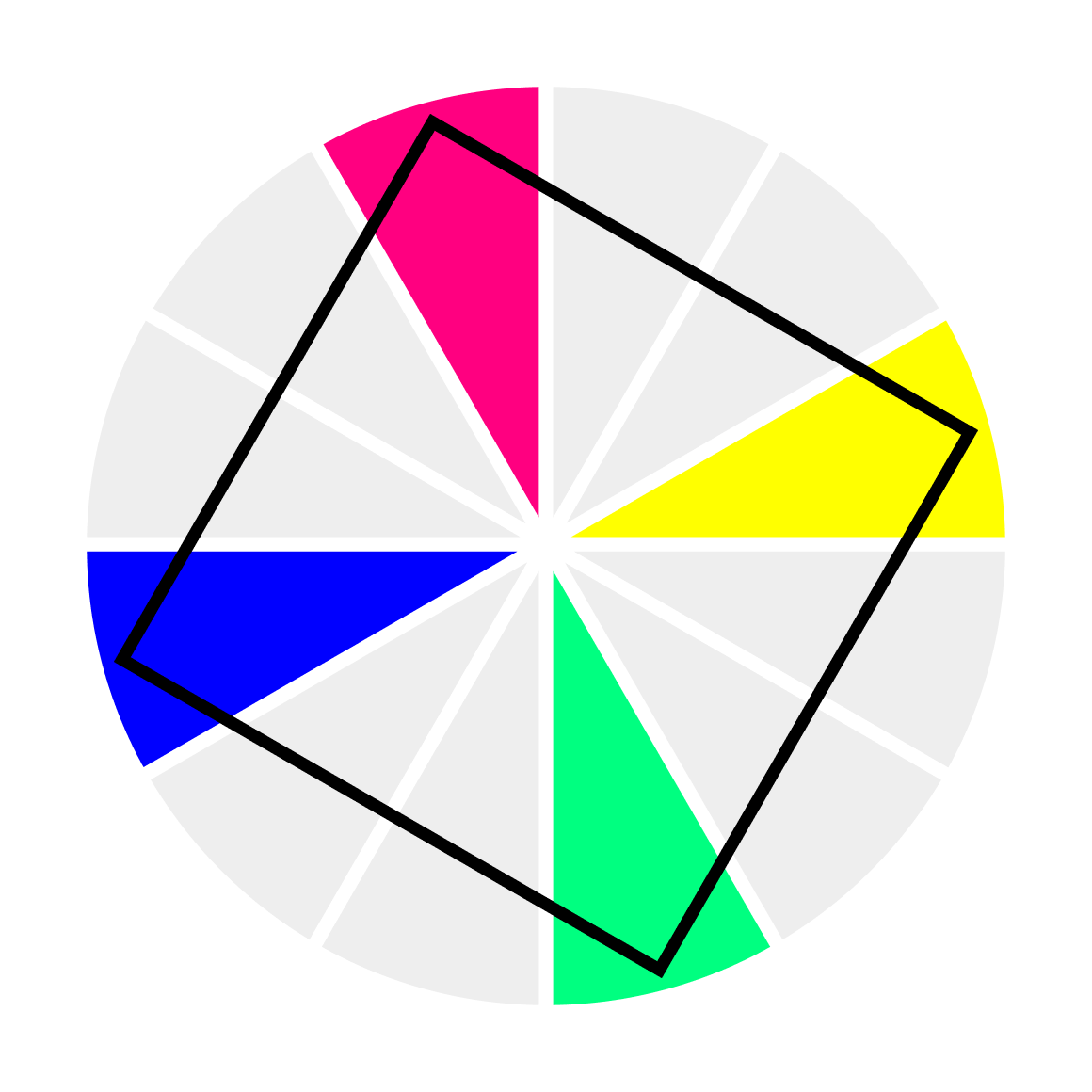
Image credit: Baseline Team
Introduction
Once we start choosing colours to use in a design, we’re into the business of building a colour palette. Let’s explore!
First, we’ll take a look at the main types of colour relationships that it’s important to know about. Then, we’ll cover some practical tips for how to build colour palettes.
In this assignment, we’ll be referring to the following colour wheel. The colour wheel simply provides a model for describing the relationship between different hues.
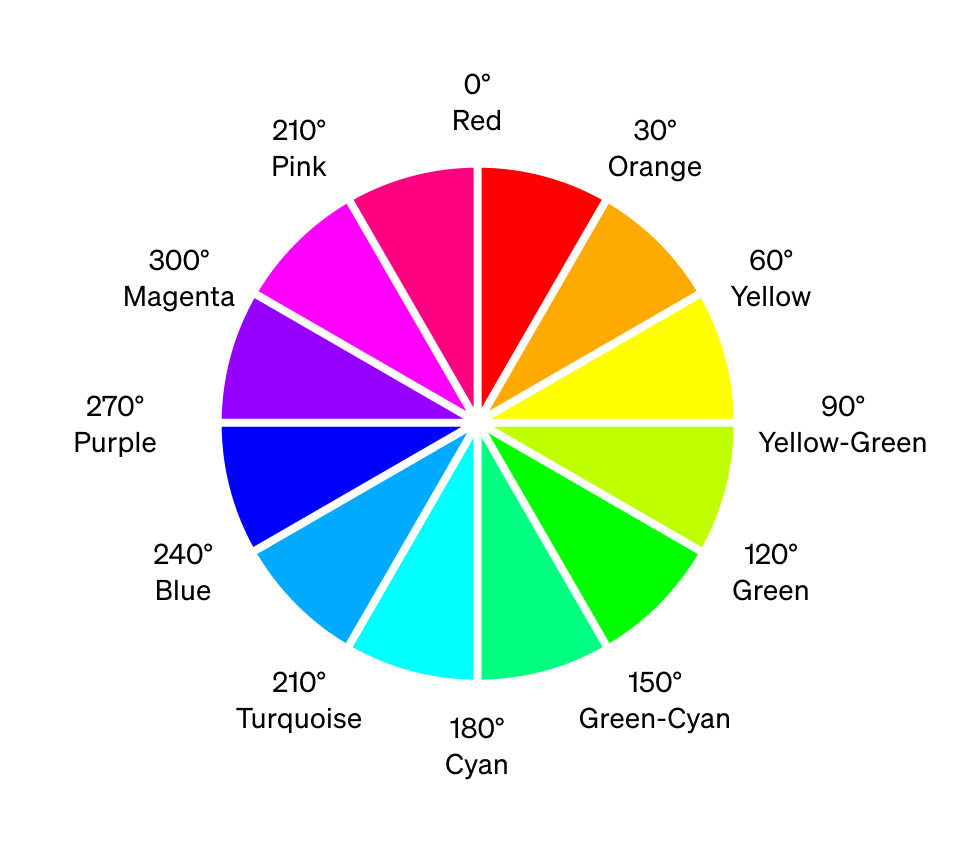
The names of the standard types of colour palette are descriptive of the relationships between the colours. So a palette with hues that are next to each other on the colour wheel is called “analogous”; one where the hues are from opposite sides of the colour wheel is called “complementary”; etc.
Types of colour palette
Analogous colour palette
Formed of hues that are next to each other on the colour wheel.
Example shown:
- pink, red, orange
Other examples:
- yellow, yellow‑green, green
- blue, purple, magenta
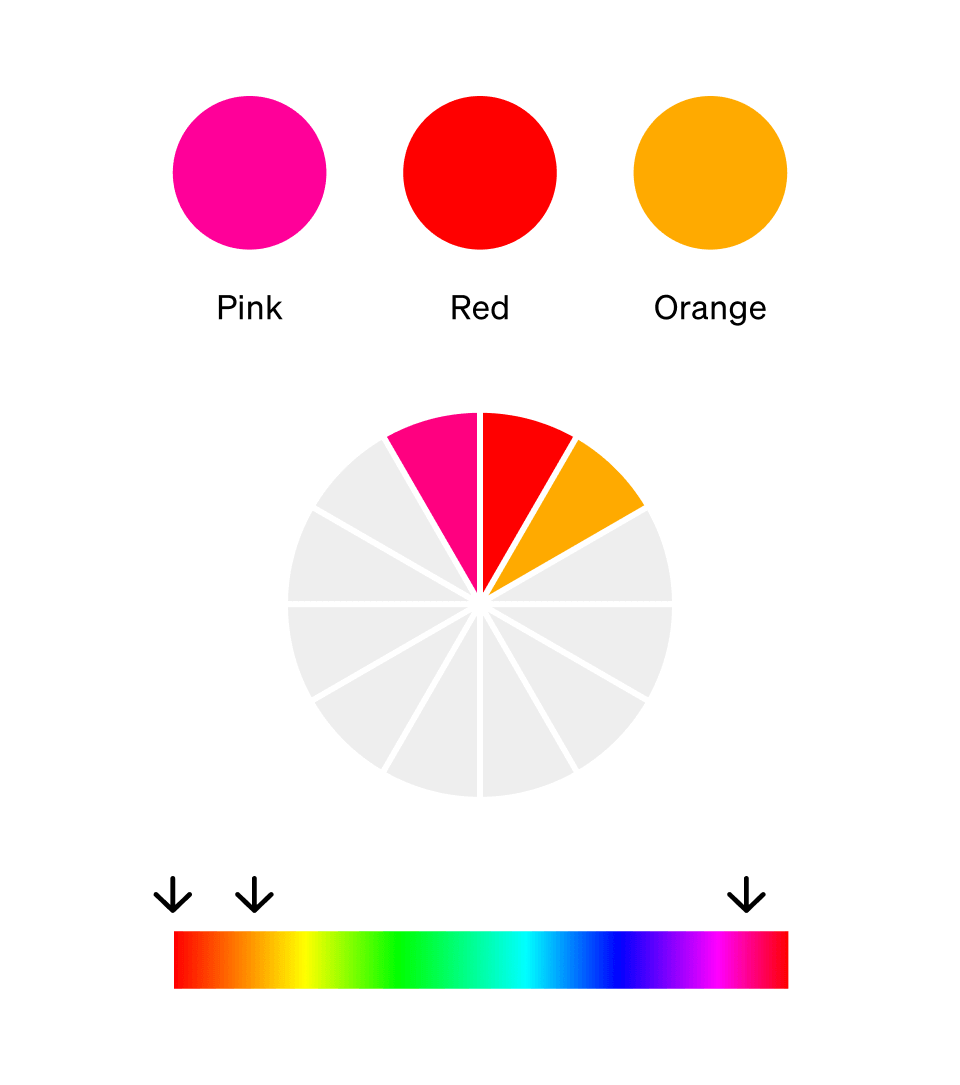
Complementary colour palette
Formed of hues that are opposite each other on the colour wheel.
Example shown:
- pink, green‑cyan
Other examples:
- yellow, blue
- red, cyan
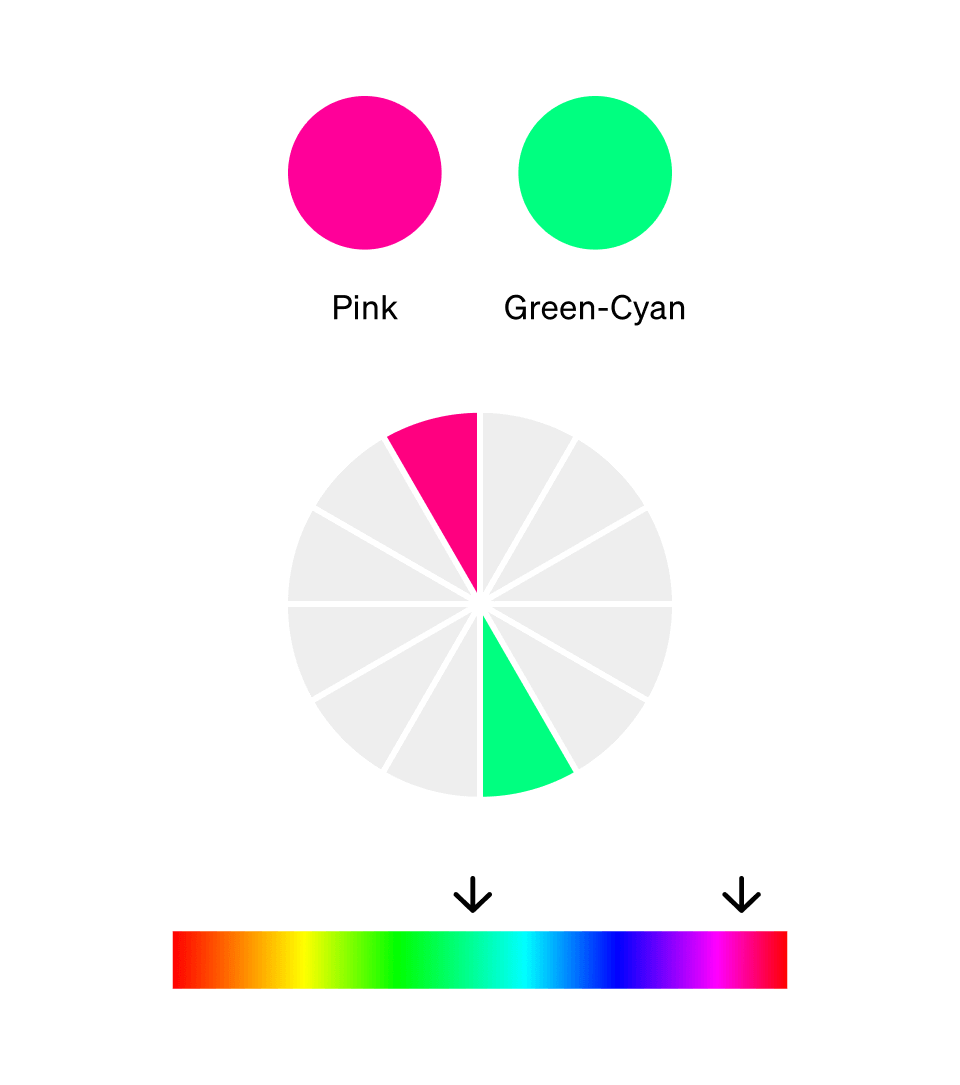
Split–complementary colour palette
Formed of a base hue, and then two hues from the opposite side of the colour wheel.
Example shown:
- pink (base), green, cyan
Other examples:
- yellow (base), turquoise, purple
- green‑cyan (base), magenta, red
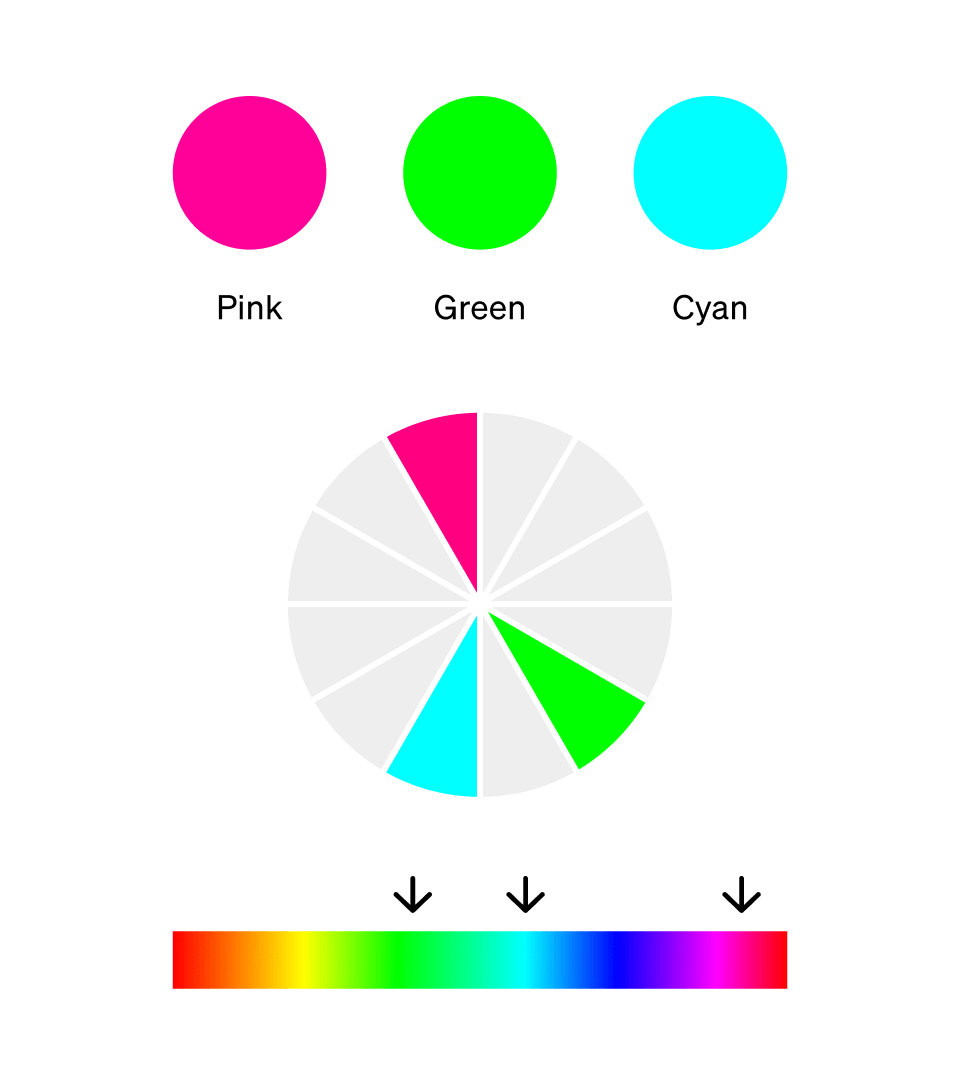
Monochromatic colour palette
Formed of tints and shades of a single hue. Think of a tint as “adding” white, and a shade as “adding” black.
Example shown:
- pink, pink tint, pink shade
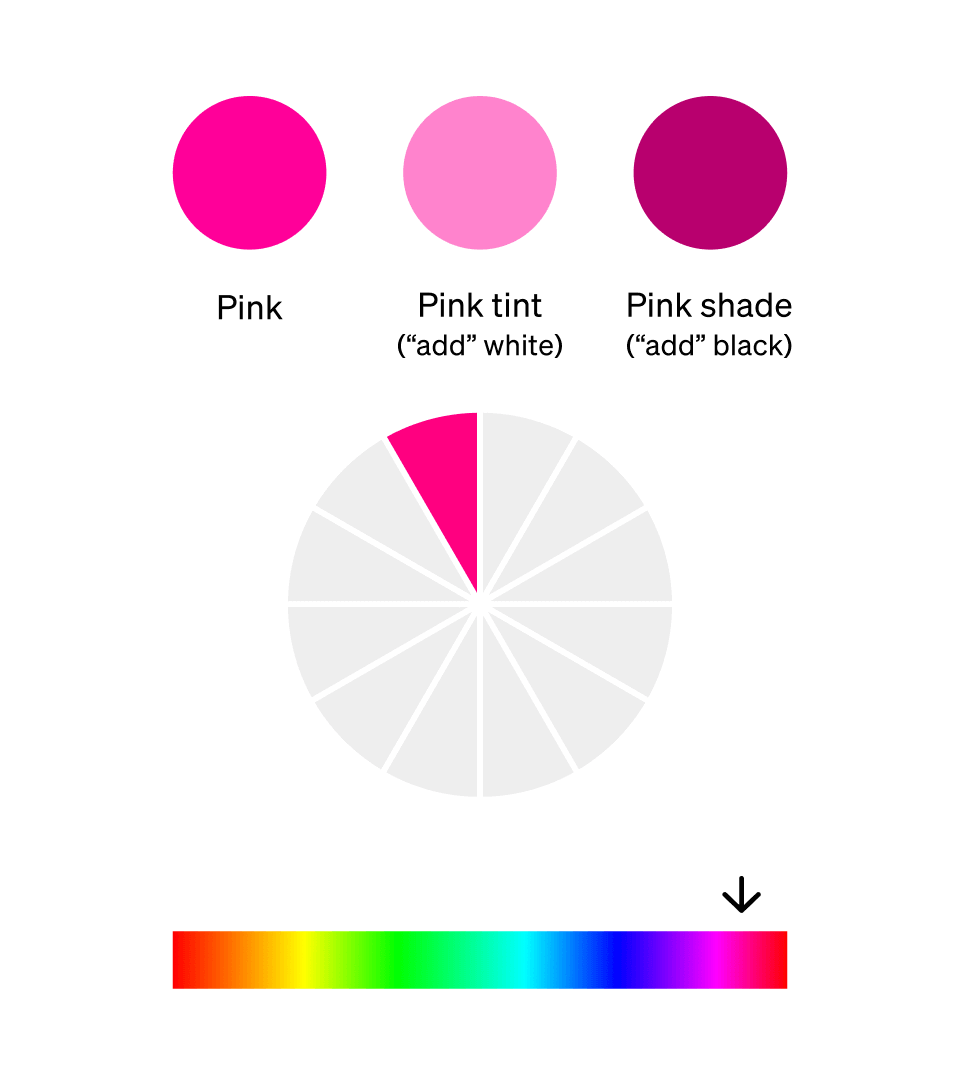
Triadic colour palette
Formed of hues from three relatively evenly-spaced points around the colour wheel.
Example shown:
- pink, yellow‑green, turquoise
Other examples:
- yellow, magenta, cyan
- purple, orange, green‑cyan

Tetradic colour palette
Formed of two pairs of complementary hues, creating a rectangular shape on the colour wheel.
Example shown:
- pink, green‑cyan, purple, yellow‑green
Other examples:
- orange, turquoise, yellow‑green, purple
- red, cyan, yellow, blue

Square colour palette
Formed of two pairs of complementary hues, creating a square shape on the colour wheel
Example shown:
- pink, yellow, green‑cyan, blue
Other examples:
- red, yellow‑green, cyan, purple
- orange, green, turquoise, magenta
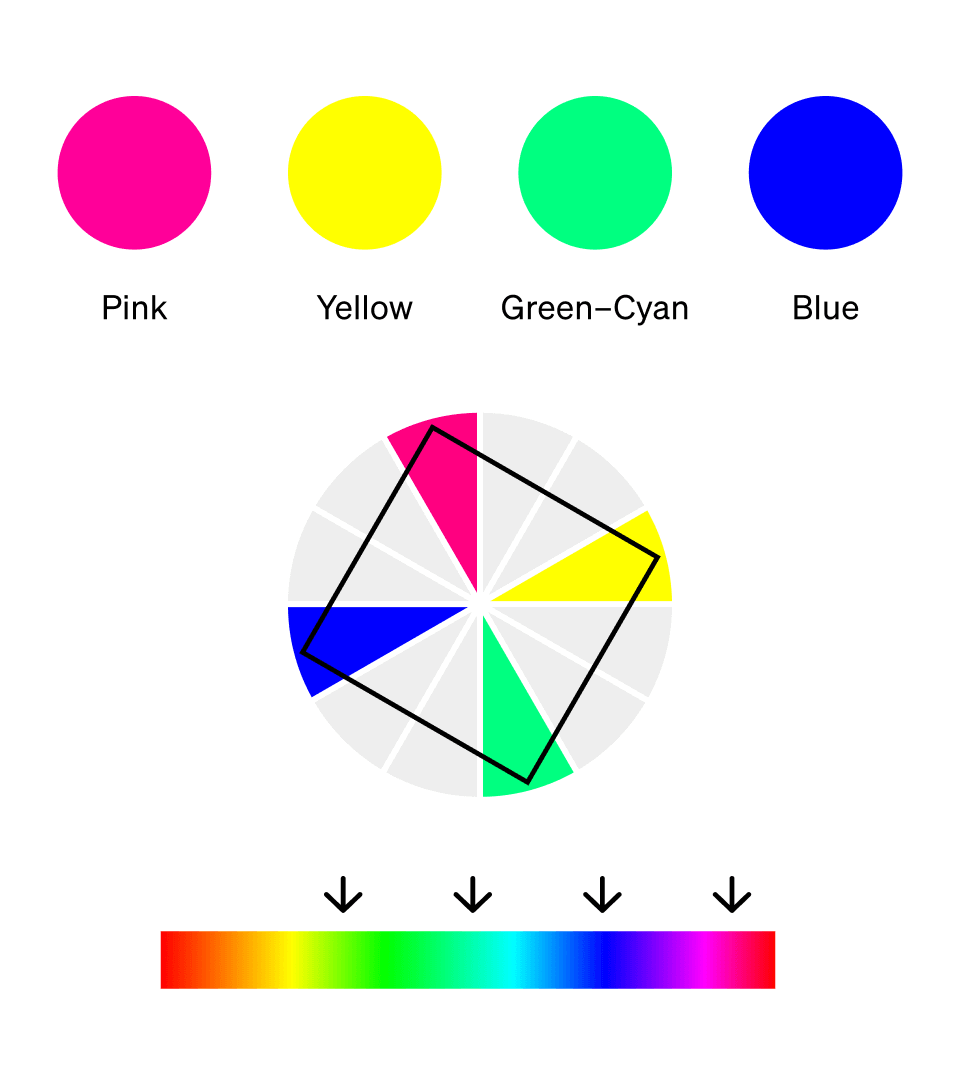
In conclusion...
This assignment covered the structure of standard colour palettes: analogous, complementary, split-complementary, monochromatic, triadic, tetradic, and square.
You can use these as a starting point when choosing colours for a project. In the next assignment, we’ll cover how to choose a colour palette, step-by-step.